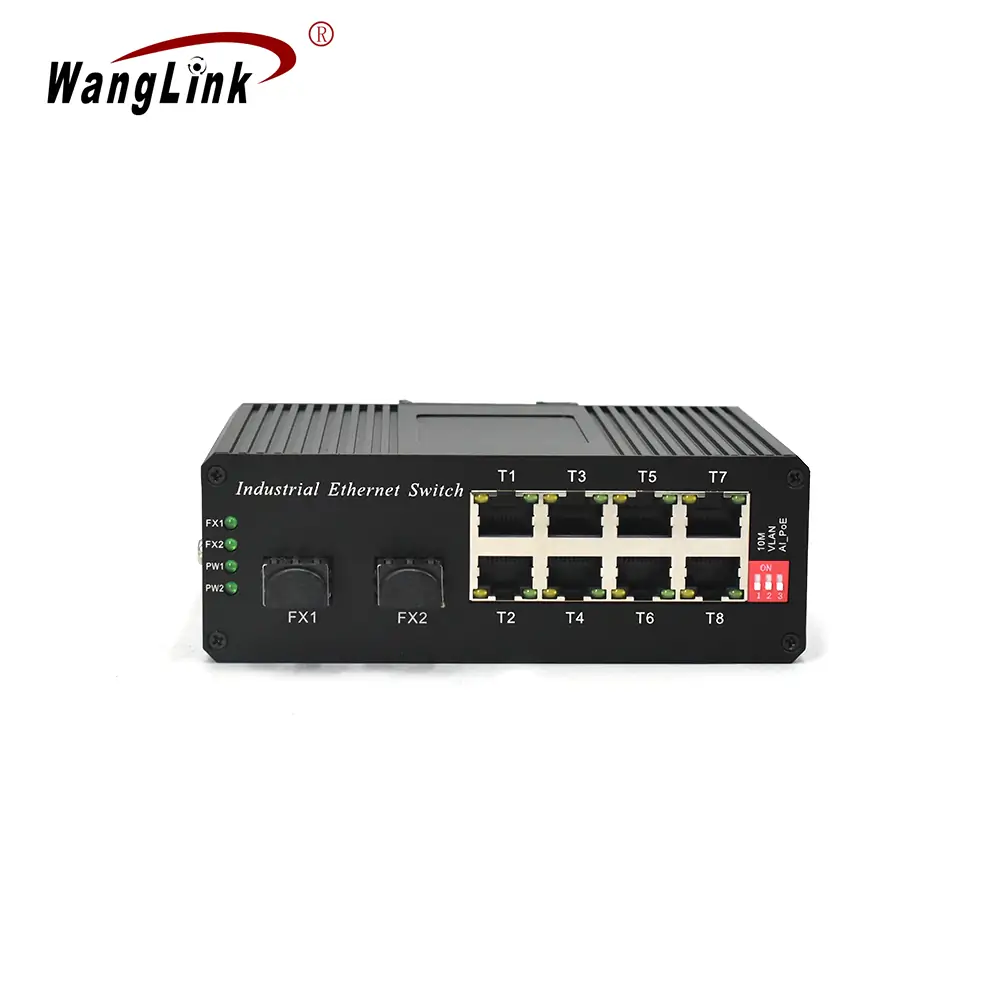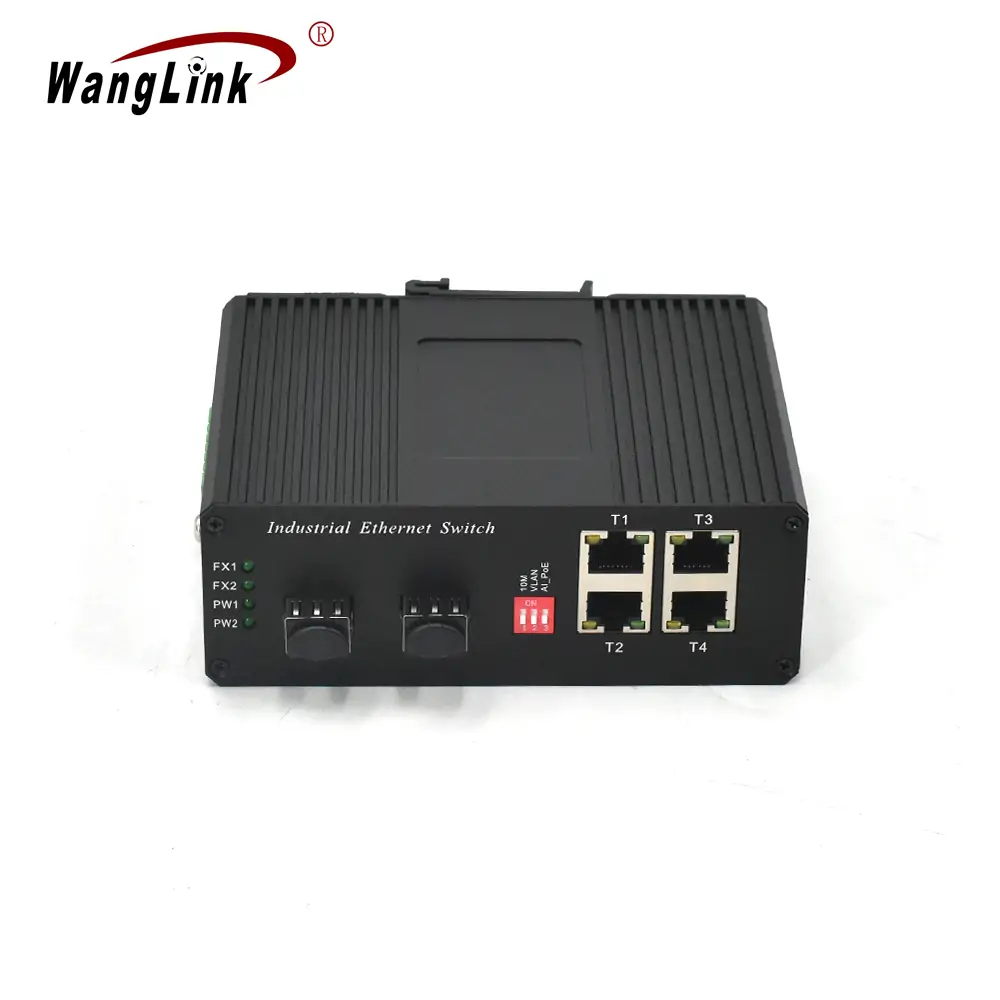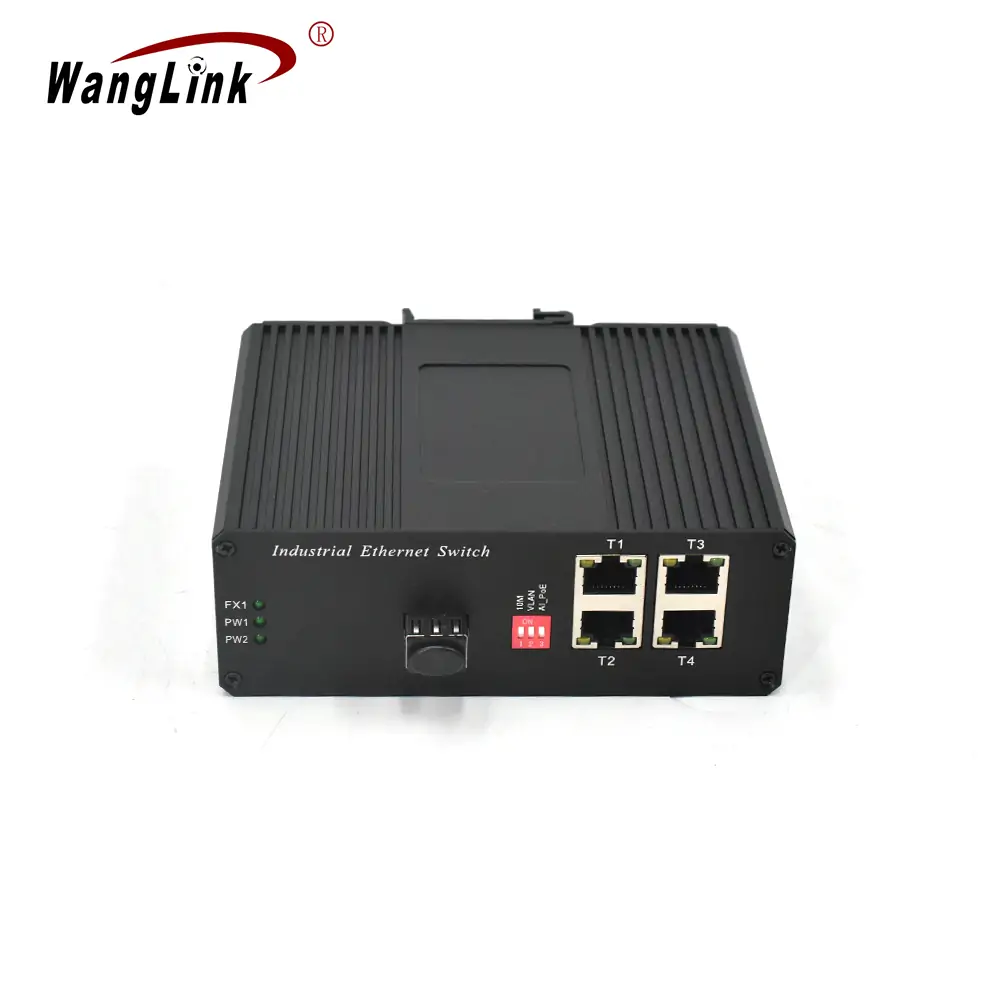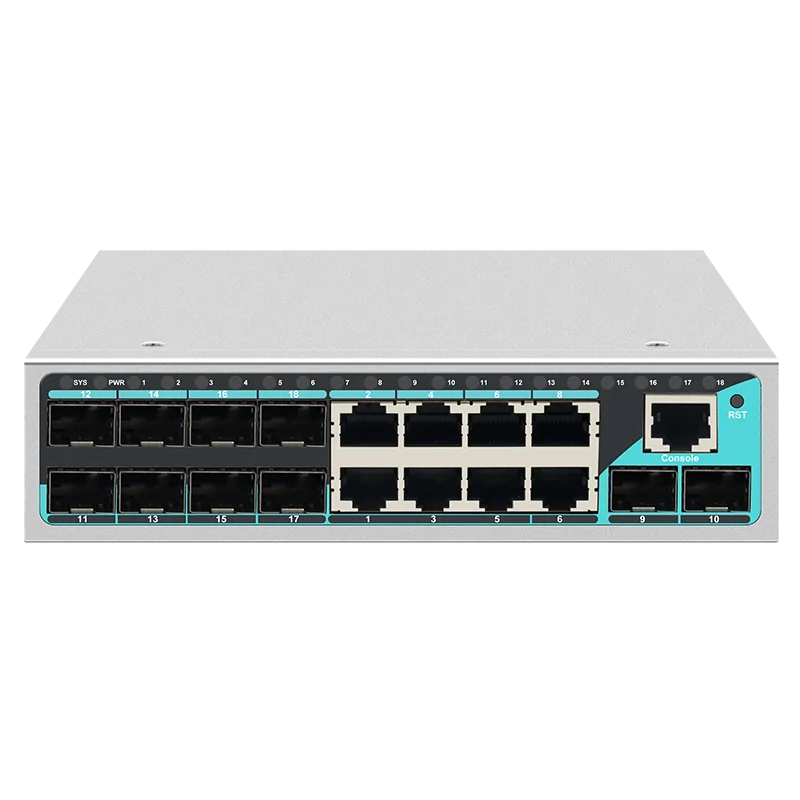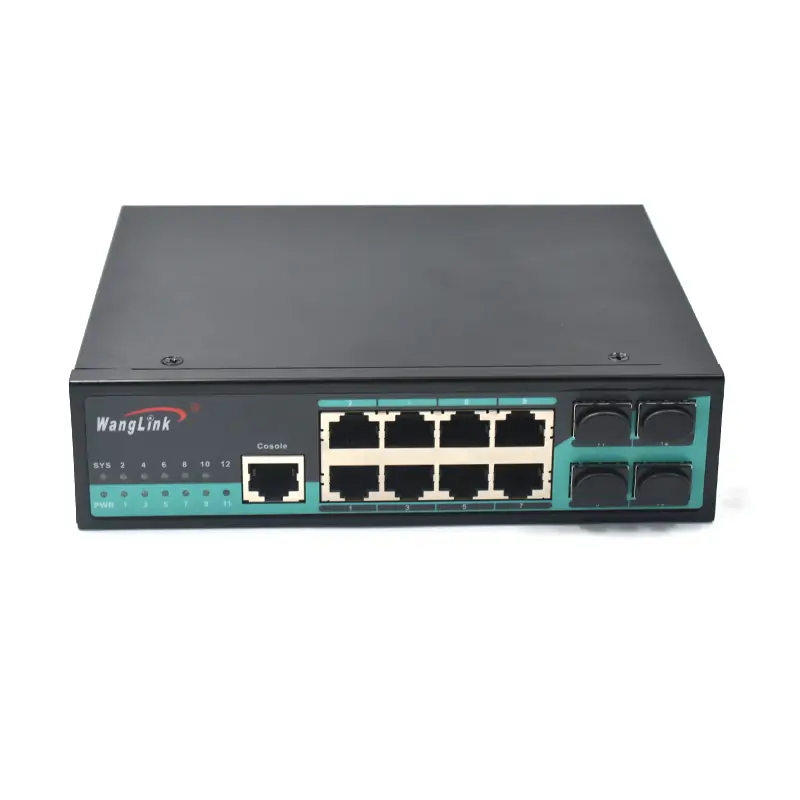Multigig Ethernet Switch: The Ultimate Guide to High-Speed Network Infrastructure in 2024
In today’s rapidly evolving digital landscape, network infrastructure demands have reached unprecedented levels. The traditional gigabit ethernet switch, while reliable, often falls short of meeting modern bandwidth requirements. Enter the multigig ethernet switch – a game-changing technology that bridges the gap between standard gigabit and 10-gigabit networking solutions.

What is a Multigig Ethernet Switch?
A multigig ethernet switch is a network device that supports multiple gigabit speeds, typically offering 2.5G, 5G, and 10G capabilities on the same ports. Unlike traditional switches that are limited to 1Gbps, these advanced devices can automatically negotiate higher speeds when connected to compatible devices, providing seamless scalability for growing network demands.
Key Features of Multigig Technology
The evolution from standard ethernet switches to multigig solutions represents a significant leap in networking technology. These switches incorporate several advanced features:
- Auto-negotiation capabilities that detect and optimize connection speeds
- Backward compatibility with existing gigabit infrastructure
- Power over Ethernet Plus (PoE+) support for high-power devices
- Advanced Quality of Service (QoS) management
- Enhanced security protocols and VLAN support
Understanding Multigig Speeds and Standards
IEEE Standards Compliance
Multigig ethernet switches adhere to specific IEEE standards that ensure interoperability and performance consistency:
| Speed | IEEE Standard | Cable Type | Maximum Distance |
|---|---|---|---|
| 2.5GBASE-T | IEEE 802.3bz | Cat5e/Cat6 | 100 meters |
| 5GBASE-T | IEEE 802.3bz | Cat6/Cat6a | 100 meters |
| 10GBASE-T | IEEE 802.3an | Cat6a/Cat7 | 100 meters |
| 25GBASE-T | IEEE 802.3by | Cat8 | 30 meters |
Performance Comparison: Traditional vs. Multigig
When comparing traditional gigabit switches with multigig alternatives, the performance differences become immediately apparent:
Traditional Gigabit Switch Limitations:
- Fixed 1Gbps speed ceiling
- Bottlenecks in high-demand applications
- Limited future-proofing capabilities
- Inadequate for modern wireless access points
Multigig Switch Advantages:
- Flexible speed options (2.5G, 5G, 10G)
- Optimized for Wi-Fi 6 and Wi-Fi 6E access points
- Enhanced video streaming and file transfer capabilities
- Future-ready infrastructure investment
Applications and Use Cases
Enterprise Network Infrastructure
Modern enterprises require robust network infrastructure capable of handling diverse workloads. A multigig ethernet switch serves as the backbone for various enterprise applications:
- High-density wireless deployments supporting Wi-Fi 6 access points
- Video conferencing systems requiring consistent, high-bandwidth connections
- Cloud-based applications with intensive data transfer requirements
- Virtualized server environments demanding low-latency connections
Industrial and Manufacturing Networks
Industrial environments present unique networking challenges that multigig switches address effectively:
- Real-time monitoring systems for production line optimization
- IoT device connectivity supporting Industry 4.0 initiatives
- Surveillance networks with high-resolution camera feeds
- Automated control systems requiring reliable, high-speed communication
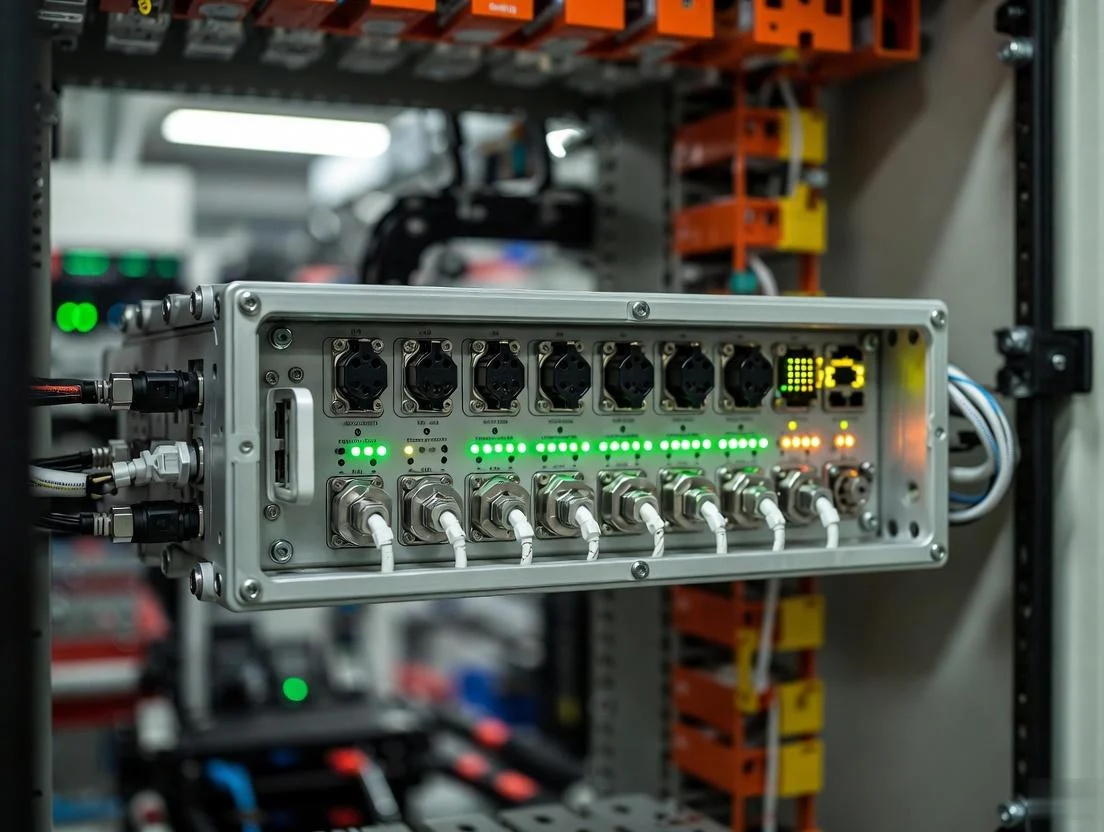
Case Study: TechCorp’s Network Transformation
The Challenge
TechCorp, a mid-sized software development company with 500 employees, faced significant network bottlenecks that impacted productivity. Their existing gigabit infrastructure couldn’t support the increasing demands of:
- 4K video conferencing across multiple departments
- Large file transfers between development teams
- Cloud-based development environments
- High-density wireless connectivity for mobile devices
The Solution
Working with Wanglink, a leading ethernet switch manufacturer, TechCorp implemented a comprehensive multigig network upgrade:
Phase 1: Core Infrastructure Upgrade
- Deployed 48-port multigig switches in main distribution areas
- Implemented 10G uplinks to core network infrastructure
- Upgraded wireless access points to Wi-Fi 6 standard
Phase 2: Department-Specific Optimization
- Engineering department: 10G connections for CAD workstations
- Marketing team: 5G connections for video editing suites
- General office areas: 2.5G connections for standard productivity
Results and Benefits
The multigig implementation delivered measurable improvements:
| Metric | Before Upgrade | After Upgrade | Improvement |
|---|---|---|---|
| File Transfer Speed | 125 MB/s | 625 MB/s | 400% increase |
| Video Conference Quality | 1080p max | 4K stable | Significant enhancement |
| Network Latency | 15ms average | 3ms average | 80% reduction |
| User Satisfaction | 6.2/10 | 9.1/10 | 47% improvement |
Selecting the Right Multigig Ethernet Switch
Port Configuration Considerations
Choosing the appropriate port configuration depends on your specific network requirements:
Small Office/Home Office (SOHO):
- 8-16 port multigig switches
- Mix of 1G and 2.5G ports
- Basic management features
Medium Enterprise:
- 24-48 port configurations
- Full multigig capability across all ports
- Advanced management and security features
Large Enterprise/Data Center:
- 48+ port high-density switches
- 10G/25G uplink capabilities
- Redundant power supplies and hot-swappable components
Power over Ethernet (PoE) Requirements
Modern multigig switches often incorporate advanced PoE capabilities:
- PoE+ (IEEE 802.3at): Up to 30W per port
- PoE++ (IEEE 802.3bt): Up to 60W or 90W per port
- Universal PoE: Flexible power allocation across ports
Management and Security Features
Enterprise-grade multigig switches should include:
- Web-based management interface for easy configuration
- SNMP support for network monitoring integration
- VLAN capabilities for network segmentation
- Access Control Lists (ACLs) for security enforcement
- Link Aggregation Control Protocol (LACP) for redundancy
Wanglink: Your Trusted Multigig Switch Partner
As a professional network equipment supplier with over 13 years of manufacturing experience, Wanglink offers comprehensive multigig ethernet switch solutions tailored to diverse industry needs.
Why Choose Wanglink for Your Multigig Needs?
Manufacturing Excellence:
- State-of-the-art production facilities in China
- Rigorous quality control processes
- ISO 9001 certified manufacturing standards
Customization Capabilities:
- One-stop OEM and ODM services
- Custom PCBA design and development
- Flexible packaging and branding options
Inventory and Support:
- $30 million inventory value for immediate shipping
- Comprehensive technical support team
- Multiple payment and contract options for secure transactions

Installation and Configuration Best Practices
Pre-Installation Planning
Successful multigig switch deployment requires careful planning:
- Network Assessment:
- Audit existing cable infrastructure
- Identify bandwidth bottlenecks
- Plan for future growth requirements
- Cable Infrastructure Evaluation:
- Verify Cat6/Cat6a cable compatibility
- Test cable integrity and performance
- Plan cable management strategies
- Power Requirements:
- Calculate total PoE power needs
- Ensure adequate electrical infrastructure
- Plan for redundant power supplies
Configuration Steps
Initial Setup Process:
- Physical Installation:
- Mount switches in appropriate rack locations
- Connect power and network cables
- Verify LED status indicators
- Basic Configuration:
- Access web management interface
- Configure IP addressing scheme
- Set up VLAN structures
- Advanced Features:
- Configure QoS policies
- Implement security settings
- Set up monitoring and alerting
Performance Optimization
To maximize multigig switch performance:
- Enable flow control to prevent packet loss
- Configure appropriate buffer sizes for your traffic patterns
- Implement proper QoS policies for critical applications
- Monitor port utilization and adjust configurations as needed
Future-Proofing Your Network Investment
Technology Roadmap Considerations
Investing in multigig technology positions your organization for future networking demands:
Short-term Benefits (1-2 years):
- Immediate performance improvements
- Support for current Wi-Fi 6 deployments
- Enhanced user experience
Medium-term Advantages (3-5 years):
- Compatibility with emerging Wi-Fi 7 standard
- Support for increased IoT device density
- Scalability for growing bandwidth demands
Long-term Value (5+ years):
- Foundation for next-generation applications
- Reduced need for infrastructure overhauls
- Continued compatibility with evolving standards
ROI Analysis Framework
When evaluating multigig switch investments, consider these factors:
| Cost Factor | Traditional Approach | Multigig Approach |
|---|---|---|
| Initial Investment | Lower upfront cost | Higher initial investment |
| Upgrade Frequency | Every 2-3 years | Every 5-7 years |
| Performance Scaling | Limited headroom | Significant headroom |
| Total Cost of Ownership | Higher long-term | Lower long-term |
Troubleshooting Common Issues
Connectivity Problems
Auto-negotiation Failures:
- Verify cable quality and specifications
- Check for electromagnetic interference
- Update device drivers and firmware
Speed Limitations:
- Confirm cable category compatibility
- Test with known-good cables
- Verify switch port configuration
Performance Issues
Bandwidth Bottlenecks:
- Monitor port utilization statistics
- Analyze traffic patterns and flows
- Implement appropriate QoS policies
Latency Problems:
- Check for network loops
- Verify spanning tree configuration
- Optimize buffer settings
Frequently Asked Questions (FAQ)
Q: What’s the difference between a multigig switch and a regular gigabit switch?
A: A multigig ethernet switch supports multiple speed options (2.5G, 5G, 10G) on the same ports, while regular gigabit switches are limited to 1Gbps. Multigig switches automatically negotiate the highest possible speed with connected devices, providing better performance and future-proofing.
Q: Do I need to upgrade my existing cables for multigig speeds?
A: It depends on your current cable infrastructure. Cat5e cables can support 2.5G speeds, while Cat6 and Cat6a cables can handle 5G and 10G respectively. For optimal performance, Cat6a or higher is recommended for new installations.
Q: Are multigig switches backward compatible with existing gigabit devices?
A: Yes, multigig switches are fully backward compatible. They will automatically negotiate to 1Gbps when connected to standard gigabit devices, ensuring seamless integration with existing network infrastructure.
Q: How much power do multigig switches consume compared to regular switches?
A: Multigig switches typically consume 10-20% more power than equivalent gigabit switches due to the additional processing requirements. However, the increased efficiency and reduced need for multiple switches often results in overall power savings.
Q: Can I use multigig switches with Wi-Fi 6 access points?
A: Absolutely! Multigig switches are ideal for Wi-Fi 6 deployments. Wi-Fi 6 access points can exceed 1Gbps throughput, making 2.5G or 5G uplinks essential for optimal wireless performance.
Q: What’s the typical lifespan of a multigig ethernet switch?
A: High-quality multigig switches from reputable manufacturers like Wanglink typically have a lifespan of 7-10 years with proper maintenance. The technology’s forward compatibility helps extend useful life compared to traditional switches.
Q: How do I calculate the ROI for upgrading to multigig switches?
A: Consider factors including productivity improvements from faster file transfers, reduced downtime, future upgrade costs avoided, and enhanced user satisfaction. Most organizations see ROI within 18-24 months through improved efficiency and reduced infrastructure refresh cycles.
Conclusion
The transition to multigig ethernet switches represents a strategic investment in your organization’s network infrastructure future. By providing flexible speed options, backward compatibility, and room for growth, these advanced switches deliver immediate performance benefits while positioning your network for emerging technologies.
Whether you’re supporting high-density wireless deployments, enabling 4K video collaboration, or preparing for IoT expansion, multigig switches provide the foundation for success. Partnering with an experienced manufacturer like Wanglink ensures you receive not only high-quality hardware but also the expertise and support necessary for successful implementation.
For more information about Wanglink’s multigig ethernet switch solutions, visit our products page or contact our expert team at [email protected] or WhatsApp: +8613544167258. Let us help you build the high-performance network infrastructure your organization deserves.
Ready to upgrade your network infrastructure? Explore our comprehensive range of multigig switches and discover how Wanglink’s 13 years of manufacturing expertise can transform your networking capabilities.

